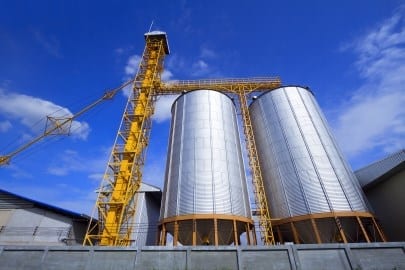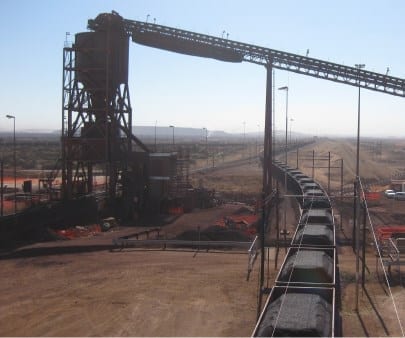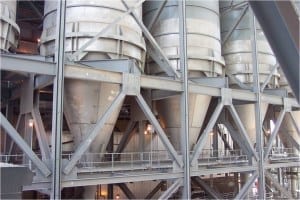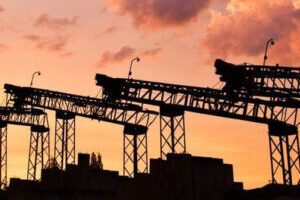Services
TUNRA Bulk Solids offers services for all industries dealing with bulk solid materials. Each year, we complete between 200 and 250 major industrial consultancy projects which cover the entire spectrum of applications related to bulk solids handling, transportation and storage. We are leaders in providing conceptual solutions to any bulk materials related task or problem that may occur in your plant, from fundamental characterisation to development of optimal designs, management processes and technical criteria. Our comprehensive laboratory test facilities and our highly qualified and committed team of engineers and consultants assist you to overcome existing handling problems and to plan new projects to ensure future trouble-free plant operation. Detailed information about the services offered by TBS can be viewed below either by Industry, Material Type or Handling Problem. For further information about a specific service or if you want to make an enquiry, please contact us directly or download our service brochures.-
Services By Handling Problems

Transfer Chute Design
Transfer chutes are used in bulk handling systems to perform a variety of operations. For instance accelerating the bulk material from a slow moving belt or apron feeder onto a conveyor, or capturing and re-directing the flow of bulk material from one conveyor belt to another.
It is important that a chute is designed correctly to ensure the efficient transfer of bulk solids without spillage and blockages and with minimum chute and belt wear. The importance is accentuated with a trend towards higher conveying speeds and ever increasing throughputs.

Bin and Hopper Design
Bins and hoppers are used for the storage of bulk materials during material handling processes. The hopper is the lower tapered section of a bin, which can also be found above feeders in gravity reclaim stockpiles.
Both must be designed for the actual bulk material being handled over the entire range of operating conditions including varying characteristics.
Testwork performed by TUNRA Bulk Solids (TBS) allows for the selection of optimum geometry of bins and hopper to ensure material flow initiation, reliable and predictable discharge and estimate of the loading on bin and hopper walls.

Transport Load-Out Systems
TUNRA Bulk Solids (TBS) offers services related to the design of transport load-out systems, including ship, train and truck to ensure reliable and predictable discharge and loading.
Contact our dedicated engineering team for troubleshooting, design audits of new and existing load-out systems and conceptual design expertise.

Feeder Optimisation and Design
Feeders control the gravity flow of bulk solids from storage, such as bins or stockpiles, to provide a uniform feedrate to the receiving belt conveyor.
It is vital that the type of feeder be chosen to suit the bulk material being handled and to provide the range of feed rates required. It is also important that feeders be used in conjunction with mass-flow hoppers to ensure both reliable flow and good control over the feeder loads and drive powers. Correct interfacing of feeders and hoppers is essential if performance objectives such uniform draw of material over the whole of the hopper outlet is to be achieved.

Stockpile Design
Gravity reclaim stockpiles are used for the short-term storage of bulk materials during material handling processes.
The design of associated storage and handling facilities requires knowledge of the bulk solid material characteristics over a range of different operating conditions.
TUNRA Bulk Solids (TBS) flow properties test work is required to be able to calculate the optimum stockpile and rathole geometry in order to maintain the required live capacity. Favourable concept design of the hopper and feeder interface is also important to ensure the best performance under all operating conditions.
-
Services By Industry

Transfer Chute Design
Transfer chutes are used in bulk handling systems to perform a variety of operations. For instance accelerating the bulk material from a slow moving belt or apron feeder onto a conveyor, or capturing and re-directing the flow of bulk material from one conveyor belt to another.
It is important that a chute is designed correctly to ensure the efficient transfer of bulk solids without spillage and blockages and with minimum chute and belt wear. The importance is accentuated with a trend towards higher conveying speeds and ever increasing throughputs.

Bin and Hopper Design
Bins and hoppers are used for the storage of bulk materials during material handling processes. The hopper is the lower tapered section of a bin, which can also be found above feeders in gravity reclaim stockpiles.
Both must be designed for the actual bulk material being handled over the entire range of operating conditions including varying characteristics.
Testwork performed by TUNRA Bulk Solids (TBS) allows for the selection of optimum geometry of bins and hopper to ensure material flow initiation, reliable and predictable discharge and estimate of the loading on bin and hopper walls.

Transport Load-Out Systems
TUNRA Bulk Solids (TBS) offers services related to the design of transport load-out systems, including ship, train and truck to ensure reliable and predictable discharge and loading.
Contact our dedicated engineering team for troubleshooting, design audits of new and existing load-out systems and conceptual design expertise.

Feeder Optimisation and Design
Feeders control the gravity flow of bulk solids from storage, such as bins or stockpiles, to provide a uniform feedrate to the receiving belt conveyor.
It is vital that the type of feeder be chosen to suit the bulk material being handled and to provide the range of feed rates required. It is also important that feeders be used in conjunction with mass-flow hoppers to ensure both reliable flow and good control over the feeder loads and drive powers. Correct interfacing of feeders and hoppers is essential if performance objectives such uniform draw of material over the whole of the hopper outlet is to be achieved.

Stockpile Design
Gravity reclaim stockpiles are used for the short-term storage of bulk materials during material handling processes.
The design of associated storage and handling facilities requires knowledge of the bulk solid material characteristics over a range of different operating conditions.
TUNRA Bulk Solids (TBS) flow properties test work is required to be able to calculate the optimum stockpile and rathole geometry in order to maintain the required live capacity. Favourable concept design of the hopper and feeder interface is also important to ensure the best performance under all operating conditions.
-
Services By Material Type

Transfer Chute Design
Transfer chutes are used in bulk handling systems to perform a variety of operations. For instance accelerating the bulk material from a slow moving belt or apron feeder onto a conveyor, or capturing and re-directing the flow of bulk material from one conveyor belt to another.
It is important that a chute is designed correctly to ensure the efficient transfer of bulk solids without spillage and blockages and with minimum chute and belt wear. The importance is accentuated with a trend towards higher conveying speeds and ever increasing throughputs.

Bin and Hopper Design
Bins and hoppers are used for the storage of bulk materials during material handling processes. The hopper is the lower tapered section of a bin, which can also be found above feeders in gravity reclaim stockpiles.
Both must be designed for the actual bulk material being handled over the entire range of operating conditions including varying characteristics.
Testwork performed by TUNRA Bulk Solids (TBS) allows for the selection of optimum geometry of bins and hopper to ensure material flow initiation, reliable and predictable discharge and estimate of the loading on bin and hopper walls.

Transport Load-Out Systems
TUNRA Bulk Solids (TBS) offers services related to the design of transport load-out systems, including ship, train and truck to ensure reliable and predictable discharge and loading.
Contact our dedicated engineering team for troubleshooting, design audits of new and existing load-out systems and conceptual design expertise.

Feeder Optimisation and Design
Feeders control the gravity flow of bulk solids from storage, such as bins or stockpiles, to provide a uniform feedrate to the receiving belt conveyor.
It is vital that the type of feeder be chosen to suit the bulk material being handled and to provide the range of feed rates required. It is also important that feeders be used in conjunction with mass-flow hoppers to ensure both reliable flow and good control over the feeder loads and drive powers. Correct interfacing of feeders and hoppers is essential if performance objectives such uniform draw of material over the whole of the hopper outlet is to be achieved.

Stockpile Design
Gravity reclaim stockpiles are used for the short-term storage of bulk materials during material handling processes.
The design of associated storage and handling facilities requires knowledge of the bulk solid material characteristics over a range of different operating conditions.
TUNRA Bulk Solids (TBS) flow properties test work is required to be able to calculate the optimum stockpile and rathole geometry in order to maintain the required live capacity. Favourable concept design of the hopper and feeder interface is also important to ensure the best performance under all operating conditions.











